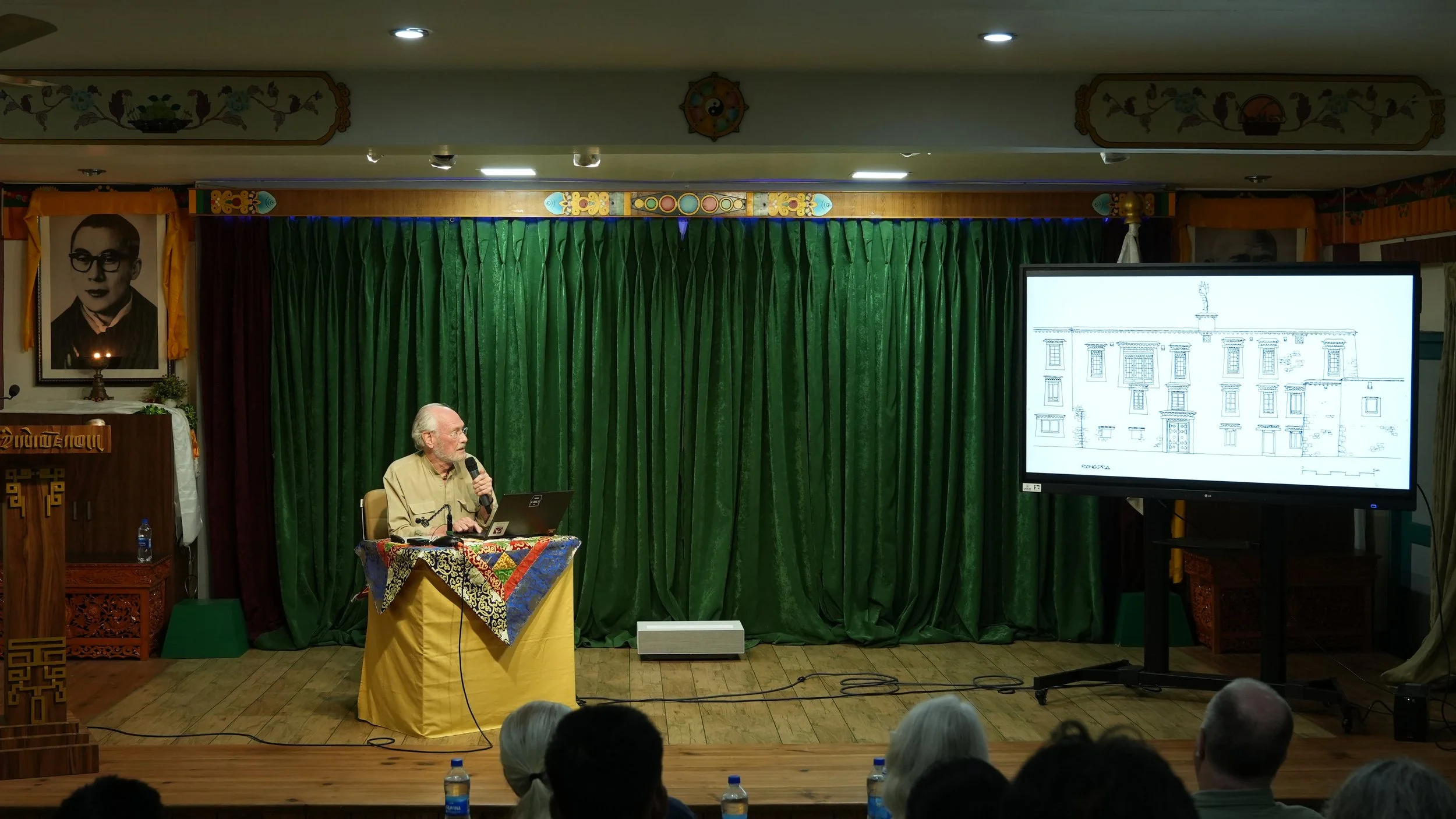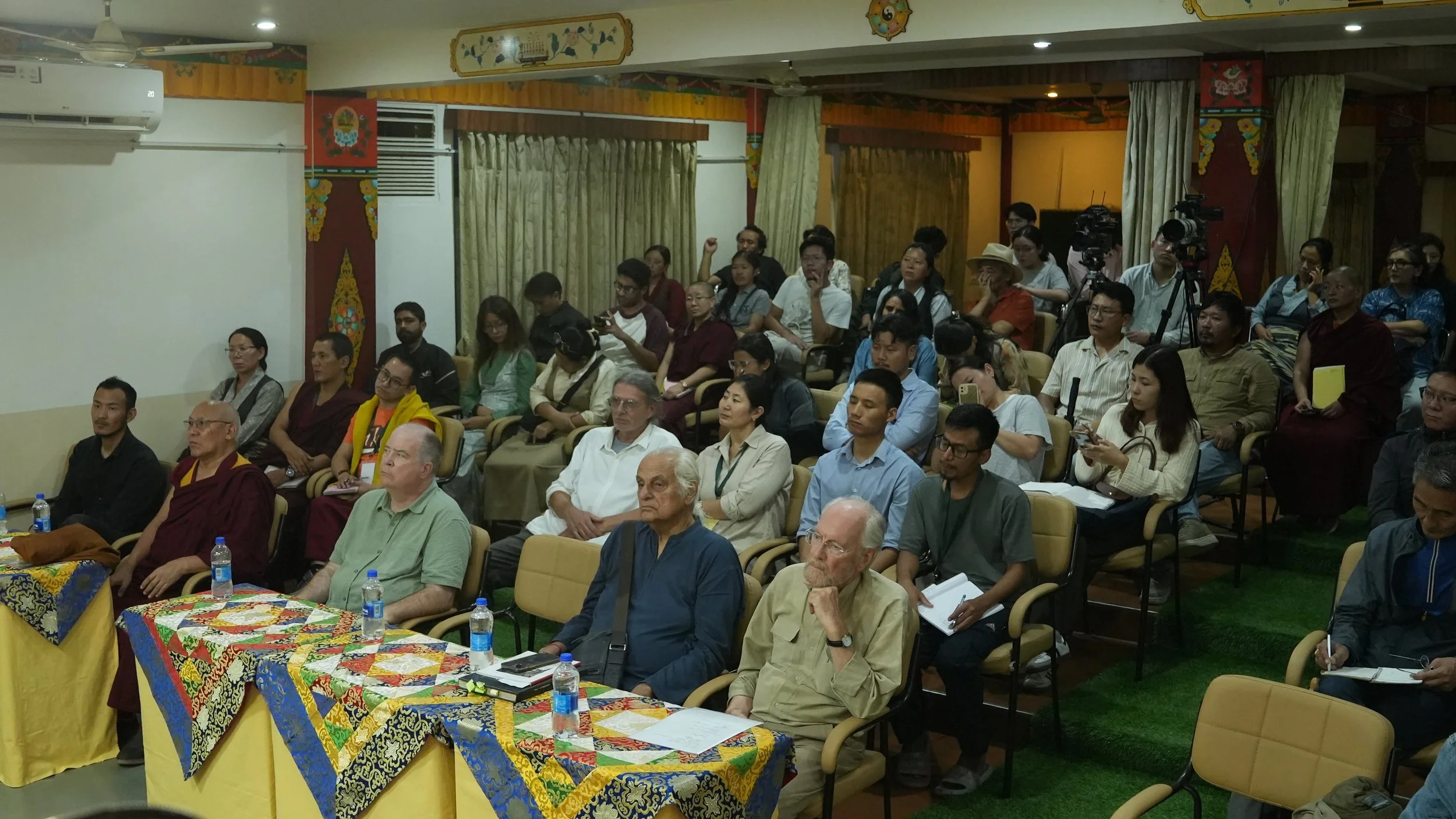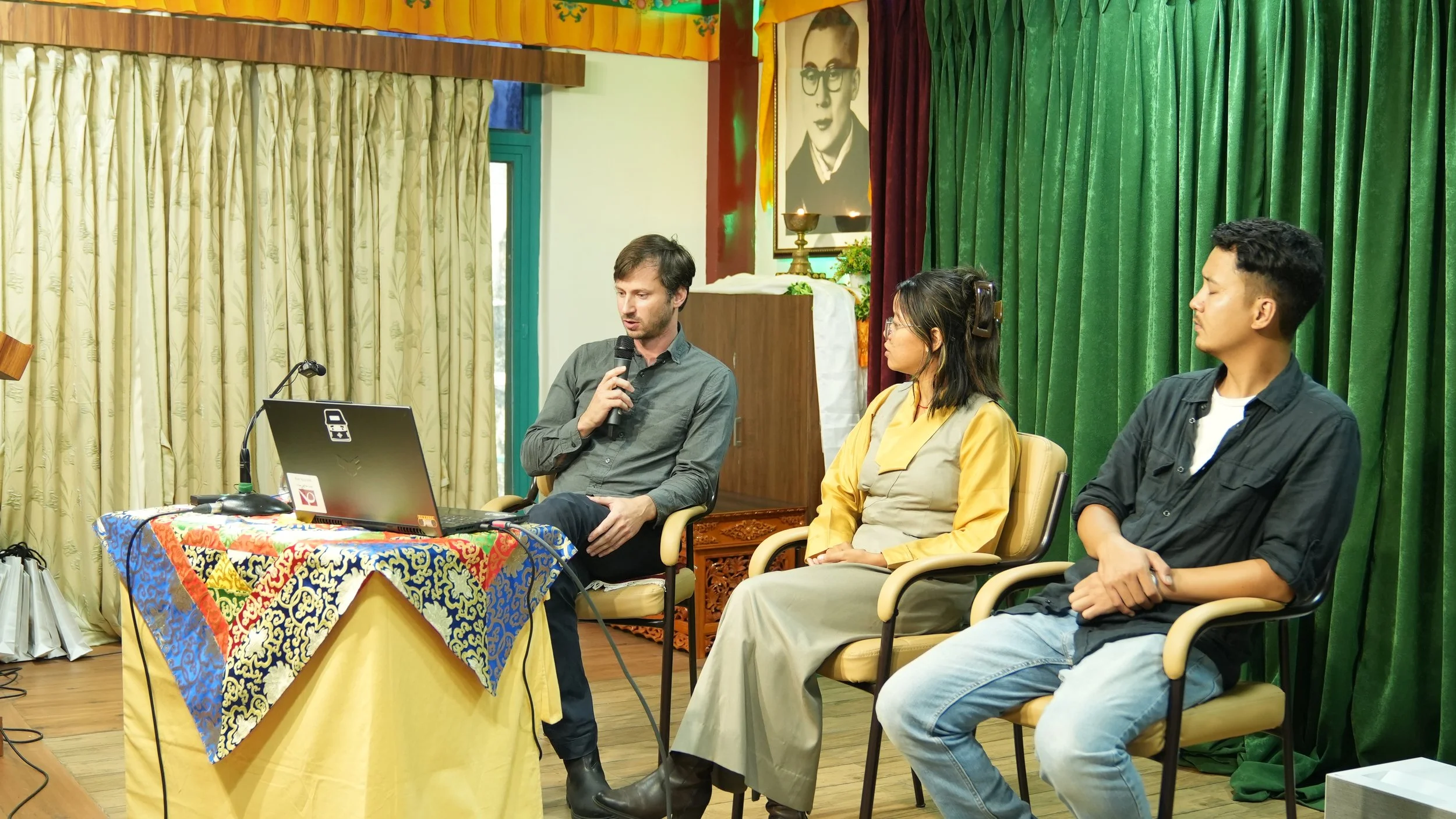Conference on Tibetan Architectural Heritage and Dharamsala Earthquake Resilience
Over July 24-25 2025, Studio Nyandak hosted a 2-day conference with international speakers in the fields of engineering, architectural preservation, and historical geography in collaboration with the Library of Tibetan Works and Archives in Gangkyi, Dharamsala.
On the first day, architects and historians discussed traditional architecture in the Himalaya, conservation projects, and ongoing efforts for documenting Tibet’s historical landscape. The second day of talks was presented by engineers and historic building conservationists. They focused on the risks that earthquakes pose to Dharamsala’s typical building typography and possibilities for retrofitting and reinforcement methods tailored to local specifications.
Studio Nyandak is grateful to the Library of Tibetan Works and Archives and its Director Geshe Lhakdor la for the collaboration and support, and to all the speakers for sharing their time and expertise.
The first day of talks, entitled “Architectural Heritage of Tibet and the Himalaya,” featured the speakers Dr. Ingun B. Amundsen, Dr. John Harrison, Dr. Karl Ryavec, and Studio Nyandak.
Dr. Amundsen is an independent researcher from Norway who has consulted Studio Nyandak’s team on their architectural documentation of Buddhist monasteries in Zanskar, Ladakh. In addition to outlining this work in Zanskar, Dr. Amundsen discussed her dissertation on Buddhist sacred architecture in Bhutan.
Dr. Harrison, an honorary research fellow at the University of Liverpool and an architectural conservationist known for his work preserving Himalayan built heritage, discussed his field experience at heritage sites in Ladakh, Mustang, and Lhasa.
Dr. Ryavec, professor at University of California, Merced, followed with a discussion of his approach to historical geography and a preview of early findings from his upcoming A Historical Atlas of Kham, a subsequent volume to his book A Historical Atlas of Tibet.
Tenzin Nyandak, Gangchen Dolma, and Yumtsokyi Bhum from Studio Nyandak ended the first day of the conference with insights into Studio Nyandak’s methodology for and applications of Tibet from Above, a collaborative project conducted alongside Professor Ryavec and supported by the Rubin Museum, and which digitizes declassified CIA aerial images of Tibet’s landscape in the 1950s-60s.
Speakers on the second day of the conference, “Earthquake Resilience in Dharamsala,” included Studio Nyandak, Paul Laroque, Dr. Javier Ortega Heras, and Marieta Núñez García.
Dechen Tsogyal and Choeyang, civil engineers at Studio Nyandak’s Dharamsala office, started the day with a discussion of the primary risks associated with living in a seismic prone region such as Dharamsala, and accessible, rapid visual screening methods for assessing an individual structure’s level of risk.
Structural engineer and assistant professor at Columbia University and Pratt Institute, Paul Laroque, then delved into an explanation of the risks behind non-engineered concrete constructions, and the benefits of reinforced concrete design for seismic risk mitigation.
Dr. Ortega Heras, a researcher at the Spanish National Research Council, discussed another building typology common to Dharamsala—unreinforced masonry—and non-destructive methods for testing its vulnerability.
Lastly, Marieta, co-founder of the Madrid-based structural engineering non-profit FENEC, concluded the conference with a talk on the value of architectural heritage preservation, specifically for historical timber structures.
Please see below for full recordings of the talks published by The Library of Tibetan Works and Archives (LTWA), and an interview with Geshe Lhakdor and Studio Nyandak conducted by the Dharamsala-based news source Phayul. Phayul also published an overview of the talks on earthquake resilience, Tibet Times covered both days one and two of the conference proceedings, and Voice of Tibet released an interview with Tenzin Nyandak on the conference and Studio Nyandak’s ongoing research.





